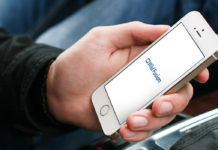Landing pages often serve as the first touchpoint between a brand and its audience. A well-designed landing page can make a huge difference in attracting, engaging and converting website visitors and converting them into customers. Investing in landing pages UX design can help a business attract more visitors as well as guide them through the conversion funnel towards the desired action.
This article explores the role of UX design in creating landing pages that impact brand perception, user engagement and business growth.
Why Landing Page UX Design is Important
UX design influences different aspects of a landing page, including layout and structure, navigation, visual hierarchy, calls-to-action and forms.
UX design serves 3 main goals: enhancing user satisfaction and trust, aligning the page’s design and messaging with the target audience’s needs and optimizing the page’s performance and usability to improve its effectiveness.
Enhancing User Satisfaction: A well-designed landing page should provide a seamless and intuitive user experience, allowing visitors to easily navigate, find information and take desired actions. By focusing on user needs and preferences, UX design helps to create landing pages that are visually appealing, functional and user-friendly.
Aligning Design with Audience Needs: A landing page should not only reflect the brand’s identity but also resonate with its target audience. UX design involves understanding the audience’s demographics, behavior and motivations. By conducting user research and gathering insights, UX designers can tailor the landing page’s design elements, content and functionality to meet the specific needs and expectations of the target audience.
Optimizing Performance: UX design takes into account factors such as page load times, responsiveness across devices and overall page performance. By optimizing these aspects, UX designers ensure that the landing page loads quickly, functions smoothly and provides a seamless experience across various devices. This not only improves user satisfaction but also positively impacts search engine rankings, as page speed and mobile-friendliness are key factors in search engine algorithms.
The Benefits of Applying UX Design to Landing Pages
Applying UX design principles to landing pages has numerous benefits. From ensuring clarity and simplicity in the page’s design, reducing friction and cognitive load, enhancing accessibility and improving user engagement. Ultimately, these factors contribute to higher conversion rates and a positive perception users have of the brand.
It Streamlines the User Journey
UX design plays an important role in driving conversions and achieving business goals. By focusing on creating landing pages with clear calls-to-action (CTAs), removing distractions from the page and guiding users towards the desired actions (this could be anything from making a purchase, subscribing to a newsletter, completing a lead form, and more) UX designers help to streamline the user journey, making it easy for visitors to complete a desired action.
It Enhances Brand Perception
From a brand perception perspective, landing pages are a representation of your brand’s identity and values. By applying UX design principles, businesses can create landing pages that align with their brand image, evoke positive emotions and build trust with their users. A visually appealing and user-friendly landing page enhances brand perception and helps establish credibility in the eyes of potential customers.
It Improves User Engagement
Another key benefit of applying UX design to landing pages is that it helps in engaging users by keeping them on a landing page and encouraging them to explore further. UX design incorporates interactive elements, captivating visuals and compelling content to create an immersive experience for users. This helps to reduce bounce rates and increase the time spent on the landing page, ultimately improving the chances of conversion.
Key Challenges in Landing Pages UX Design
While UX design offers immense benefits, it also comes with its fair share of challenges. These include striking the right balance between aesthetics and functionality, understanding the target audience’s behavior and preferences, and creating responsive and mobile-friendly designs.
Creating a visually appealing landing page is important, but it shouldn’t come at the expense of functionality. Balancing design elements with the need for clear navigation, intuitive layouts and fast-loading pages is a challenge that UX designers must tackle.
Another challenge that UX designers are facing is the need to adapt landing pages to different device and screen sizes. UX designers have to create landing pages that provide a consistent and seamless experience across desktops, tablets and smartphones without sacrificing usability.
Lastly, UX designers must navigate the challenge of continuous testing and iteration to ensure the landing page meets user expectations and achieves desired outcomes. This process involves conducting A/B tests, analyzing user behavior and making data-driven decisions with the goal of optimizing the performance and effectiveness of a landing page.
Tips for Creating Effective Landing Pages
Creating effective landing pages requires a thoughtful and user-centric approach.
Here are 10 UX design tips to apply when building or redesigning landing pages.
- Clear and compelling headline: Come up with an attention-grabbing headline for your page, one that communicates the value proposition and captures the essence of your offering.
- Concise and helpful copy: Your copy should clearly communicate the benefits of your product or service and use compelling language to encourage action.
- Intuitive navigation: Design an intuitive and straightforward navigation flow that guides users seamlessly towards the desired action, such as clicking a CTA button or filling out a form. Avoid clutter and distractions that may divert users from the primary goal.
- Eye-catching visuals: Use high-quality and relevant images or videos that support your message and evoke emotions in users.
- Prominent call-to-action (CTA): Make your CTA stand out by using prominent placement, vivid colors and clear wording. The CTA should be concise and action-oriented, compelling users to take action.
- Mobile responsiveness: Your landing page must be fully responsive and optimized for various devices and screen sizes.
- Minimize form fields: If your landing page includes a form for lead generation, keep the number of fields to a minimum. Asking for too much information upfront can deter users from completing the form. Only request essential information for initial contact and follow up later if needed.
- Social proof and trust signals: Include testimonials, reviews, or trust badges to build credibility and trust with users. Social proof and trust signals help to induce confidence in potential customers, especially if they are unsure about your brand or offering.
- A/B testing: Continuously test different elements of your landing page, such as headlines, visuals and CTAs, through A/B testing. This will allow you to gather data and insights into what resonates best with your target audience, and will guide your optimization decisions.
- Fast loading speed: Optimize the loading speed of your landing page to reduce bounce rates and provide a smooth user experience. Minimize image sizes, leverage browser caching and optimize your code to ensure a fast-loading page.
Summary
The power of UX design in generating exceptional landing pages cannot be overstated. By prioritizing user satisfaction, aligning design with audience needs and optimizing performance, UX design plays a major role in driving conversions and positively impacting brand perception. Investing in UX design for landing page creation can yield significant results for businesses, helping them leave a lasting impression on users and achieve their marketing targets.







































